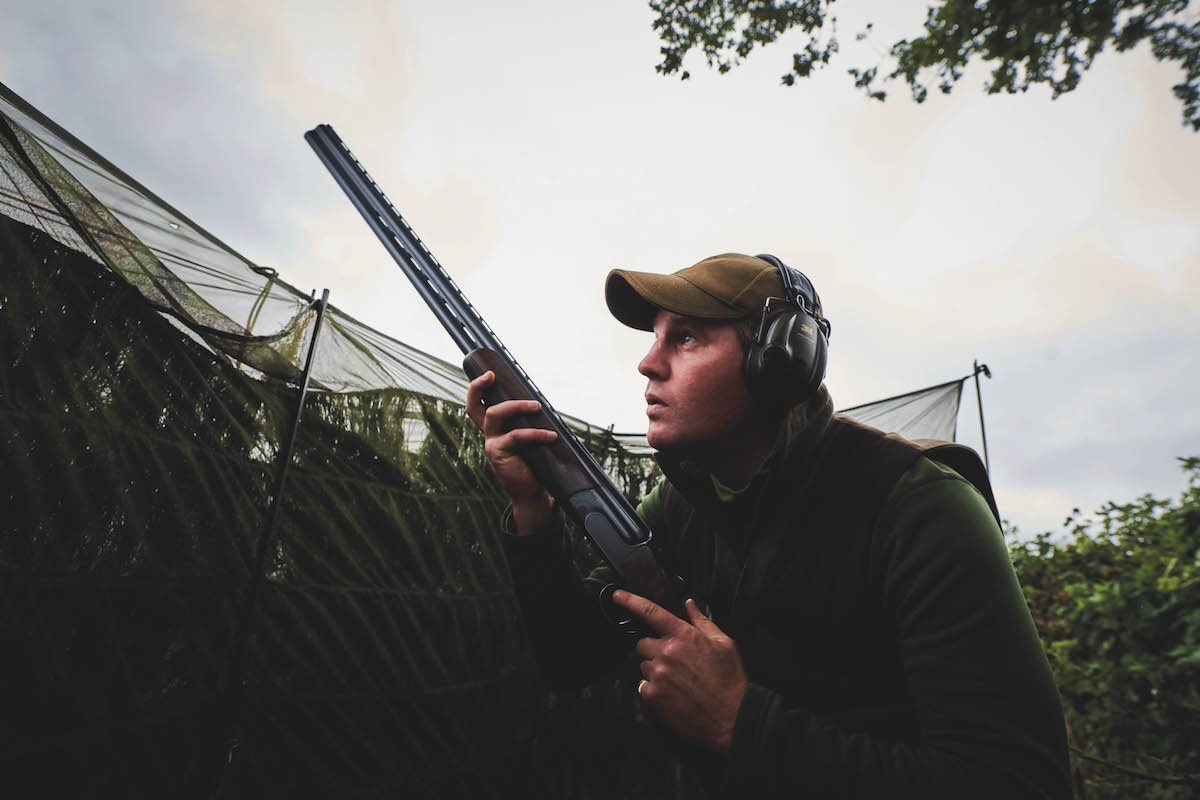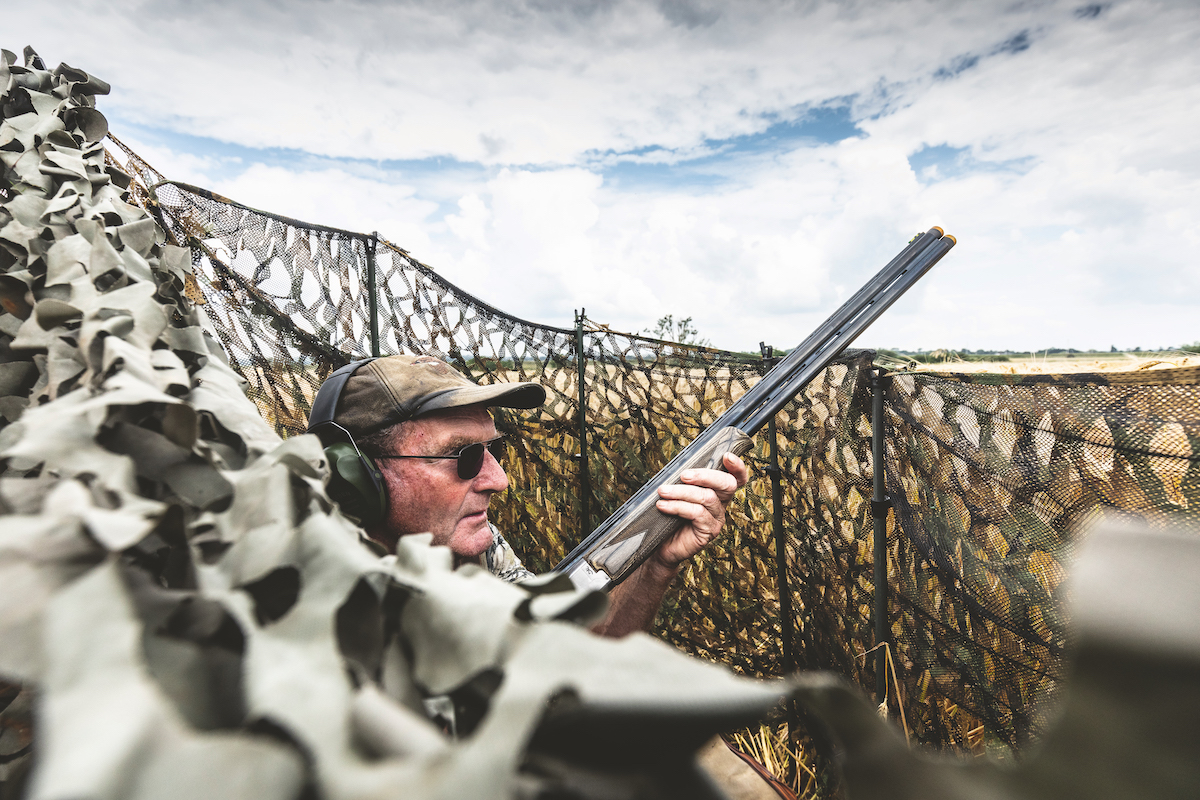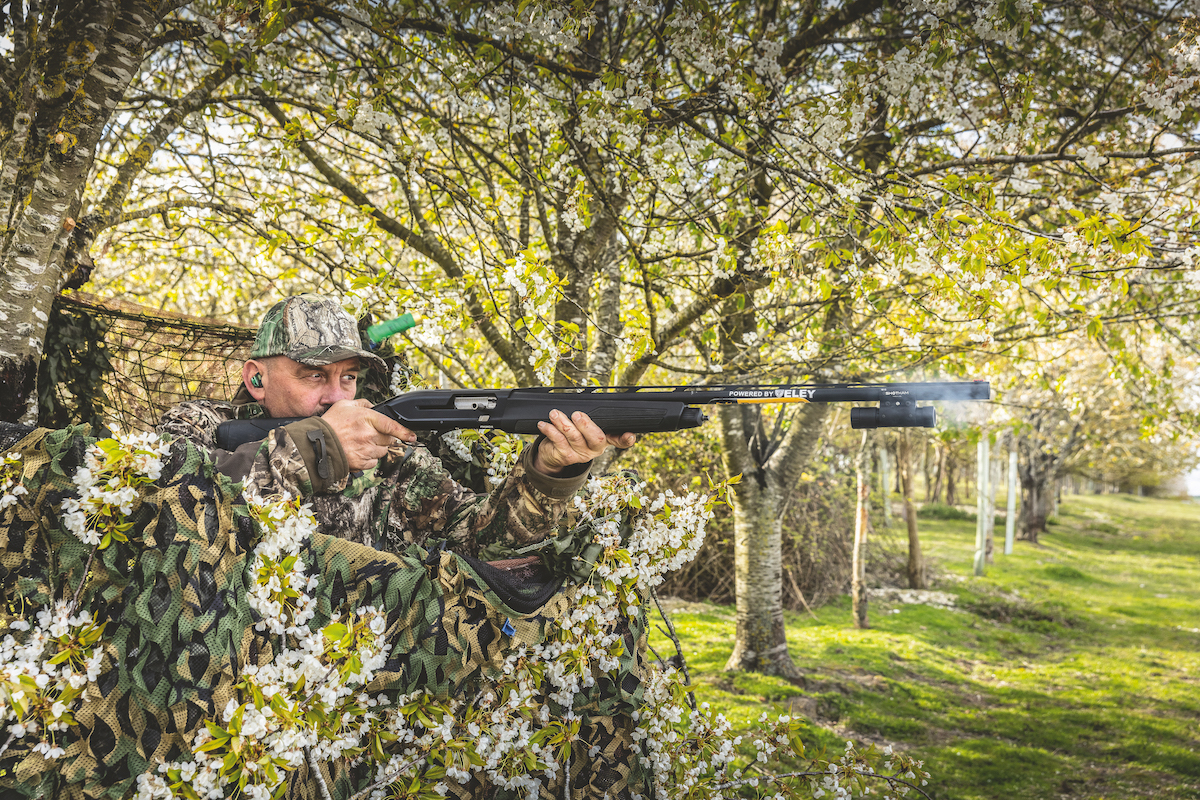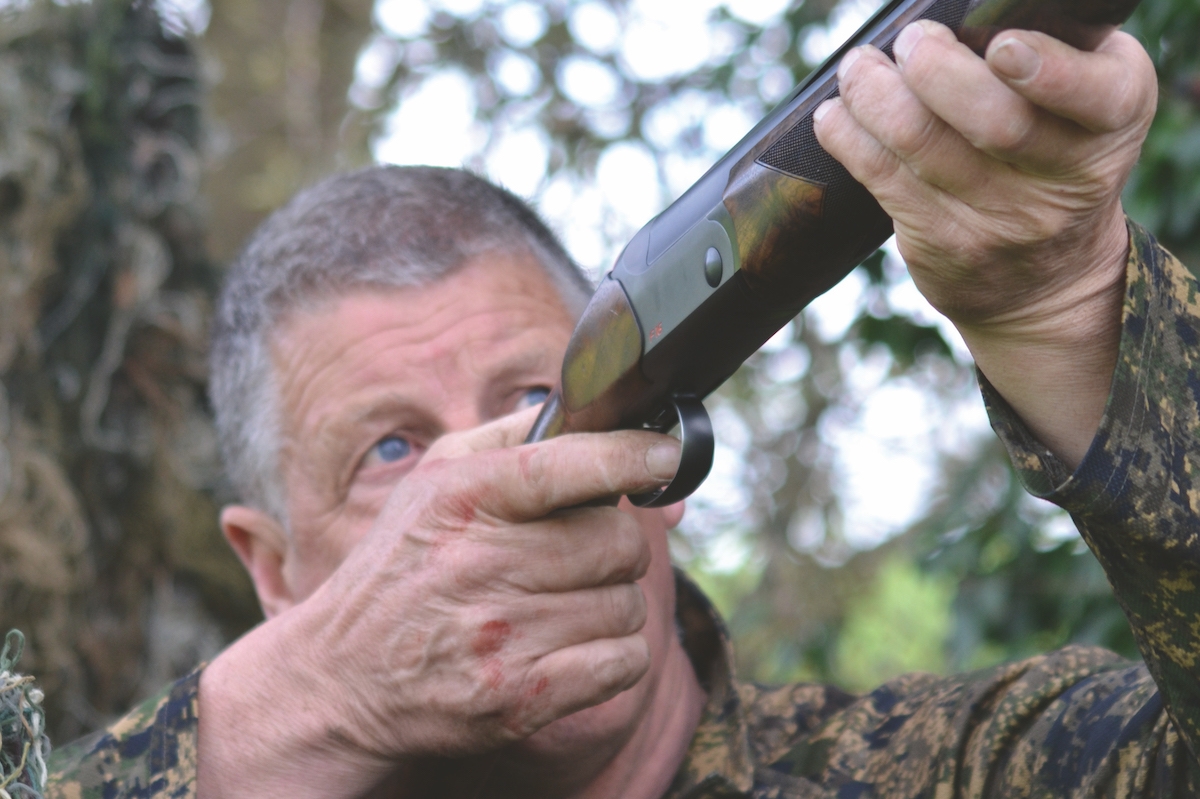Pigeon shooting: the best of both worlds
Shooting over stubble is essential for serious pigeon control says Tom Payne, but he needs a break in the rain to build a bag

Tom watching for incoming pigeons
There aren’t many pigeon shooters who don’t look forward to this time of the year. The harvest offers the perfect opportunity to manage good numbers on farms and estates. I know some people get funny about shooting over stubbles, complaining about shooting birds when they have young on the nest or arguing that you are not actually protecting crops, but I think it’s only sensible to put these statements – often repeated by knowledgeable Shots – to bed.
Firstly, when it comes to young on the nest, it is well documented that pigeons can breed throughout the year. They are very good at bringing multiple broods of two off the nest through the year. I can confirm that the end of winter breeding was successful in many areas and I saw healthy squabs on the wing from early spring.
Both parents can feed squabs in the nest and the percentage of young lost due to shooting is incredibly low. Therefore, I see no problem in controlling pigeons through peak breeding times, because those seasons can vary depending on weather, food and location.

Tom Payne sets out his decoys on the stubble, opting for statics and a single flapper
The second point, that you are not actually protecting a crop, is a ridiculous statement. Of course, shooting a stubble is not directly protecting a crop, but it is a vital part of pigeon number management ahead of the autumn drillings and winter crops. You will also be protecting the other crops, such as standing wheat. If we did not shoot birds through spring and summer, the explosion in winter would be huge. Getting a grip on numbers in the winter is hard enough as birds are flocked; in the summer they come to the stubbles in singles, pairs and small squadrons.
As pigeon control is far more straightforward over stubbles, the harvest makes for interesting shooting. In recent years, stubbles have not drawn the same amount of interest as one might expect. With early harvests, the first winter barley and rape stubbles were ignored as the winter wheat, in its milky stage, was irresistible to greedy birds. This year, laid winter barley in late June and early July shot well all the way through. Since then, winter wheat has been the main focus for pigeon populations but with the harvest starting at a more seasonable time, the first stubbles (particularly rape) were back on the menu.

Tom sets his hide up slightly away from the hedge to maximise his shooting angles, next to an oak tree that’s popular with the woodies
That said, I have been frustrated by my lack of action. It’s not as frustrating as the sporadic showers have been for farmers, however. Combines are constantly starting and stopping, leaving half-finished fields everywhere. If you speak to any farmers, I suggest you are sensible with what you say. Pigeons are one problem but constant wet weather when crops are ready to be harvested is another.
I finally had a dry day to shoot one patch of rape stubbles shortly after the Game Fair. I had watched them at the start of the week and there were a lot of birds. A few days of wet weather after that initial recon completely stopped play, but as soon as there was a break in the weather, I was straight out.

As the afternoon goes on the numbers dwindle, but Tom still continues to build a decent bag from the odd single coming over
Shooting angles
As I approached the ground, I feared I was too late. The rain paired with warm conditions meant the crop had started to chit, and so the interest from local numbers was starting to dwindle – but there was still a chance of a reasonable number to be managed. I set the hide up slightly away from the hedge to maximise my shooting angles. I was next to a fine old oak, a perfect spot. I knew the tree was very popular with the birds arriving on the four fields around me.
I had chosen not to use a rotary and was going old-school with statics and a single flapper. All was set. I quickly dropped the Land Rover off on another stubble next to my field just to act as a flag and help focus arriving birds. With a casual walk to the hide, I was already getting interest from arriving birds. I got to my seat and poured a cup of tea. No sooner had I done that than the first arrival was over the decoys. Without panicking, I placed my tea down, raised the Perazzi and sent the first bird tumbling with a puff of feathers. The clicker was up and running.
Suddenly, from out of the shade towards the opposite hedge, a squadron of about seven birds appeared. Four held the line, three broke left. A single bird decoyed. I shot the decoying bird first and then caught up with one of the others that broke the line, dropping him as well.
After a quick reload, I managed to take a very long single, left to right. Quickly dropping another Hull High Pheasant Extreme into the bottom barrel, I managed to turn to my left and shoot a long, low, left to right that crashed into the hedge. If I carried on at this rate, it was going to be a very big bag, very quickly.

Tom’s Perazzi MX12, paired with Hull High Pheasant Extremes, accounts for 131 pigeons
Consistent accuracy
I then had a spell of left-and-rights, each one seeming to connect with a bird. I had about 50 or so shots and let only two birds get away. It really is amazing what time in the hide and shooting consistently over a few weeks can do, especially after a few quiet months. Timing, tempo and concentration all come back fairly soon. After just under an hour the clicker read 65, mostly left-and-rights, but good, varied shooting.
Most small gangs were coming across the field, low and steady above quite a tall stubble. They would get to the decoys and split to either side of the patterns to commit. I was able to pick the birds like you would from a covey of grouse. Every now and then, a group would arrive and take me from the grouse moor to the pheasant drive. They wouldn’t commit but offered long and high crossers. Pigeon shooting really can offer the best of both worlds.
Just as I had got my head around those high birds, a small gang would come off my back. If I reacted well enough I would take them on, but if I saw them late I would leave them. In most cases, at least one or two would turn back to investigate. An hour and an half in and I had comfortably hit 100. I was quite pleased considering I thought I had almost missed the birds at the start of the day. Had I shot the ground before the rain, I am confident I would have shot a very straightforward 300-plus, but that’s the way it goes sometimes.

Tom picks the birds by hand, preferring not to run dogs on the sharp stubble
I decided to have a quick pick up during a bit of a lull. Rape stubble is vicious stuff, so I tend not to run dogs on it; it was easy enough to gather the birds by hand. I sat back down for the last hour but things had completely slowed down. I was expecting this. The gangs had stopped, and I was on to the odd single.
It was quite a pleasant change of pace, a slightly more gentlemanly rhythm of shooting. The steady arrival of birds, more left to rights, came in at a comfortable distance and would drift out to the neighbouring villages. In most cases, they didn’t drift back again.
Overall, it was a productive couple of hours with good-sized gangs coming in. When groups of three to seven arrive, it is a good opportunity to build a bag without educating the birds too much. Even though they decoyed with their beaks into the wind, they made the most of it and used the contours of the land and the hedges as protection. They approached at speed before making their final move, which made for challenging shooting and a very pleasing 131 at the end of play.








